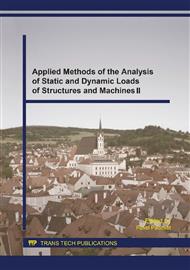p.251
p.255
p.259
p.263
p.267
p.271
p.275
p.279
p.283
Study of the Mechanical Properties Development of Concrete Containing Fine Recycled Aggregate
Abstract:
This paper is focused on the mechanical properties development of fine recycled aggregate (FRA) concrete. FRA was obtained from recycling plant in the Czech Republic. There were prepared four concrete mixtures in the laboratory. The first mixture was reference (REF) with fine natural aggregate (FNA). FNA was replaced in concrete mixtures R10, R20 and R30 in varying replacement ratio. The concrete mixtures R10, R20 and R30 contained 10 %, 20 % and 30 % FRA. There were tested properties of concrete. Finally, it is possible to say that the use of the FRA in concrete influences concrete properties. It is necessary to verify of probably an improvement of compressive strength of FRA concrete in future research. However, FRA concrete is possible to be used in the manufacturing of building structures, but it is necessary to test durability and lifespan of FRA concrete.
Info:
Periodical:
Pages:
267-270
Citation:
Online since:
February 2016
Authors:
Keywords:
Price:
Сopyright:
© 2016 Trans Tech Publications Ltd. All Rights Reserved
Share:
Citation:


